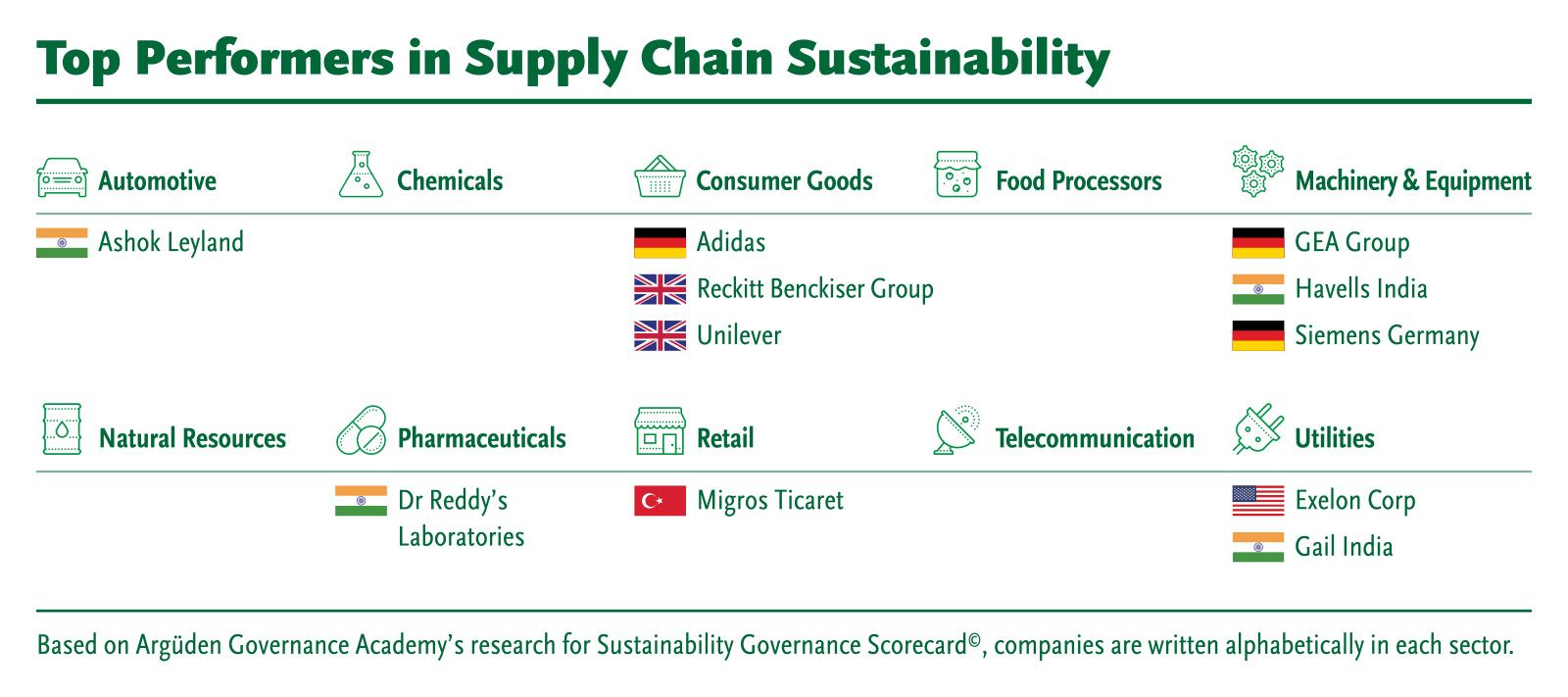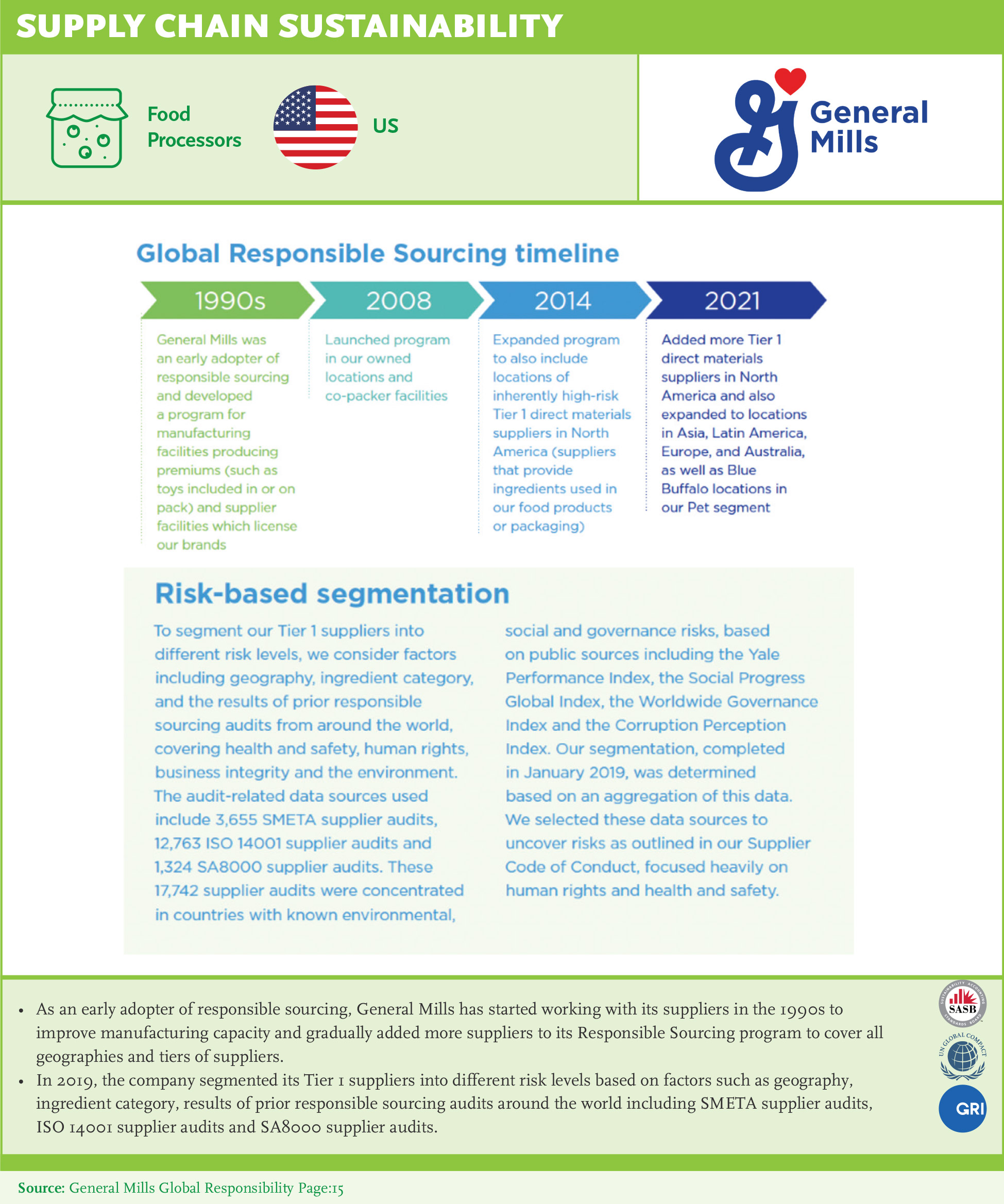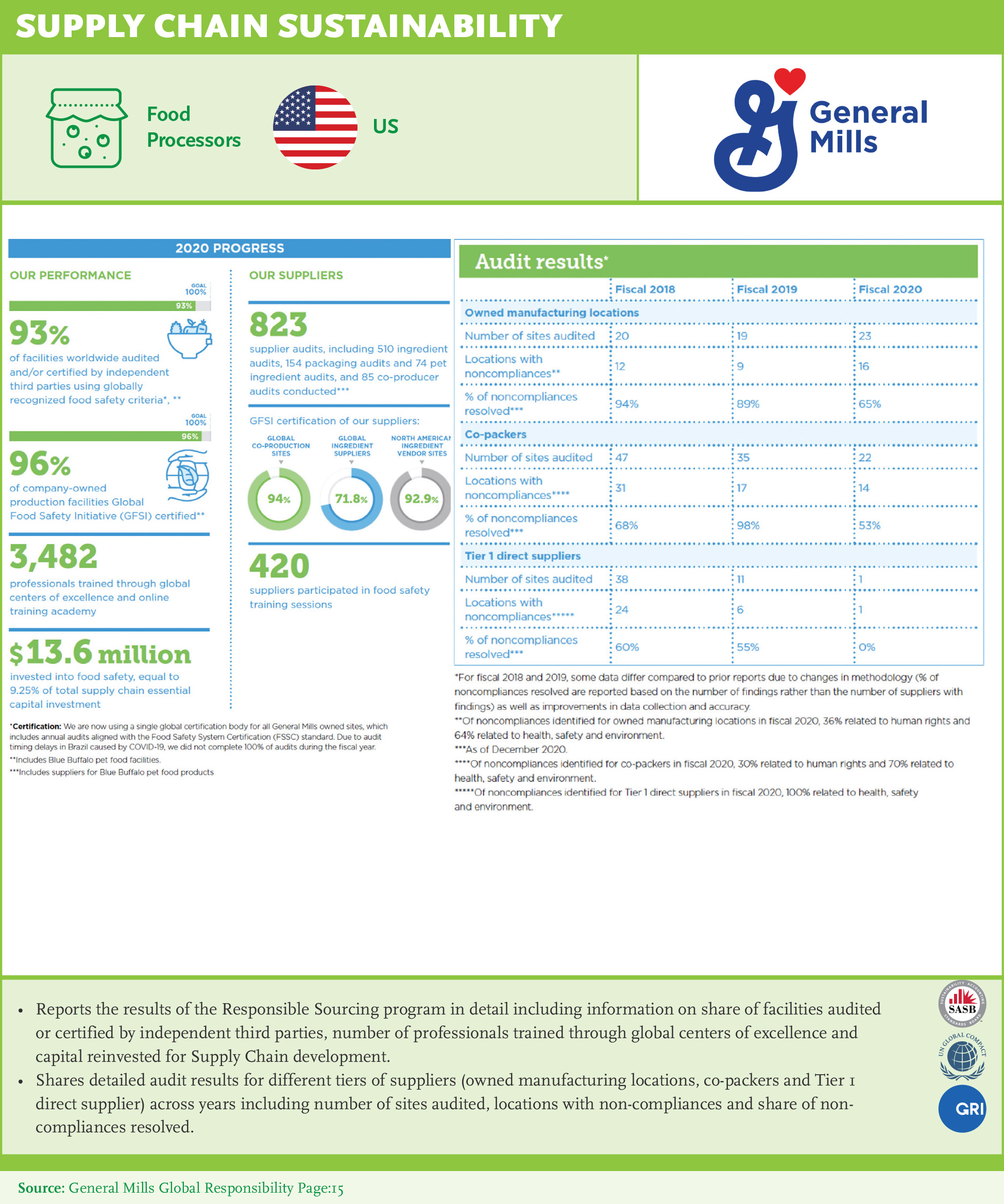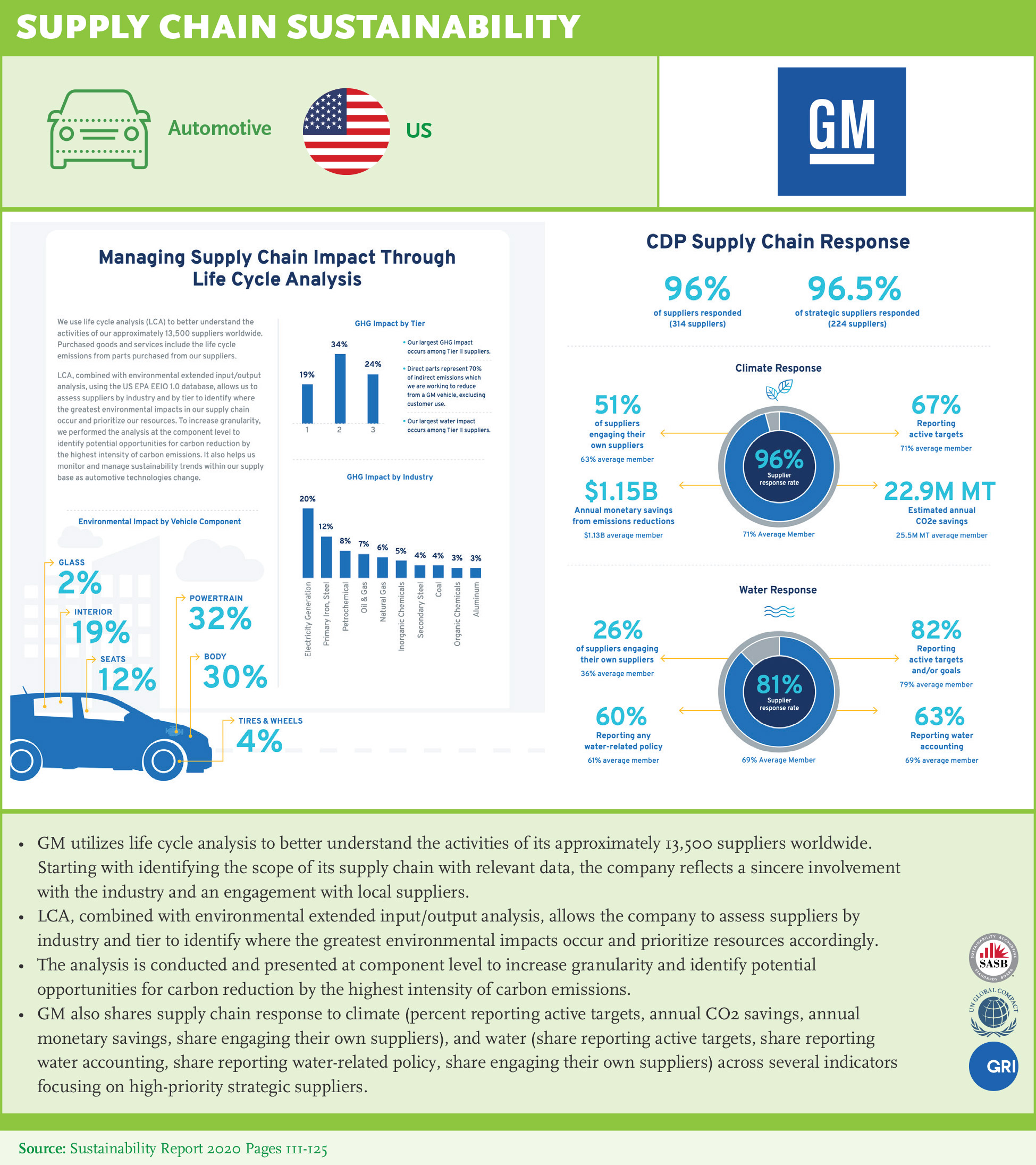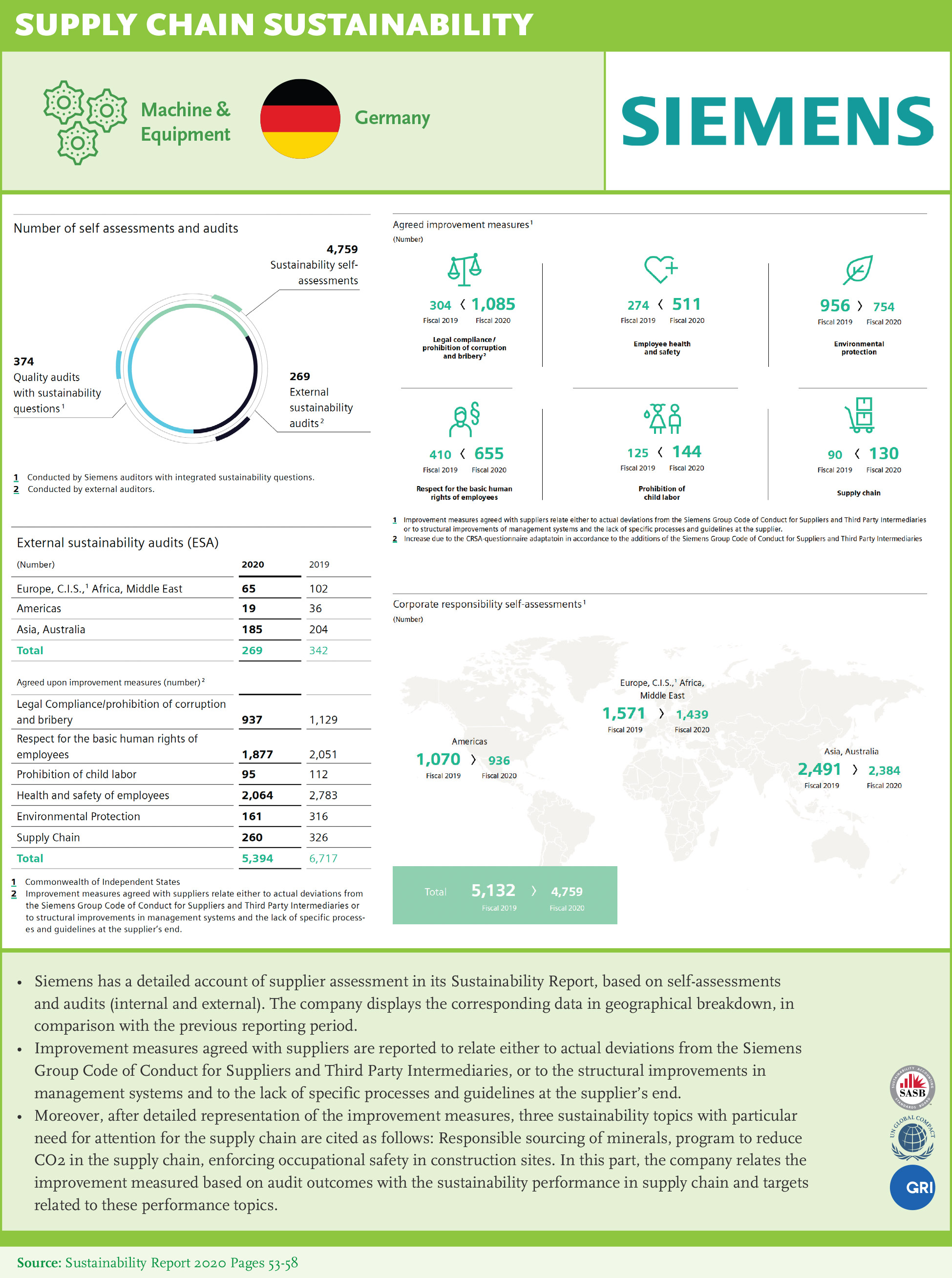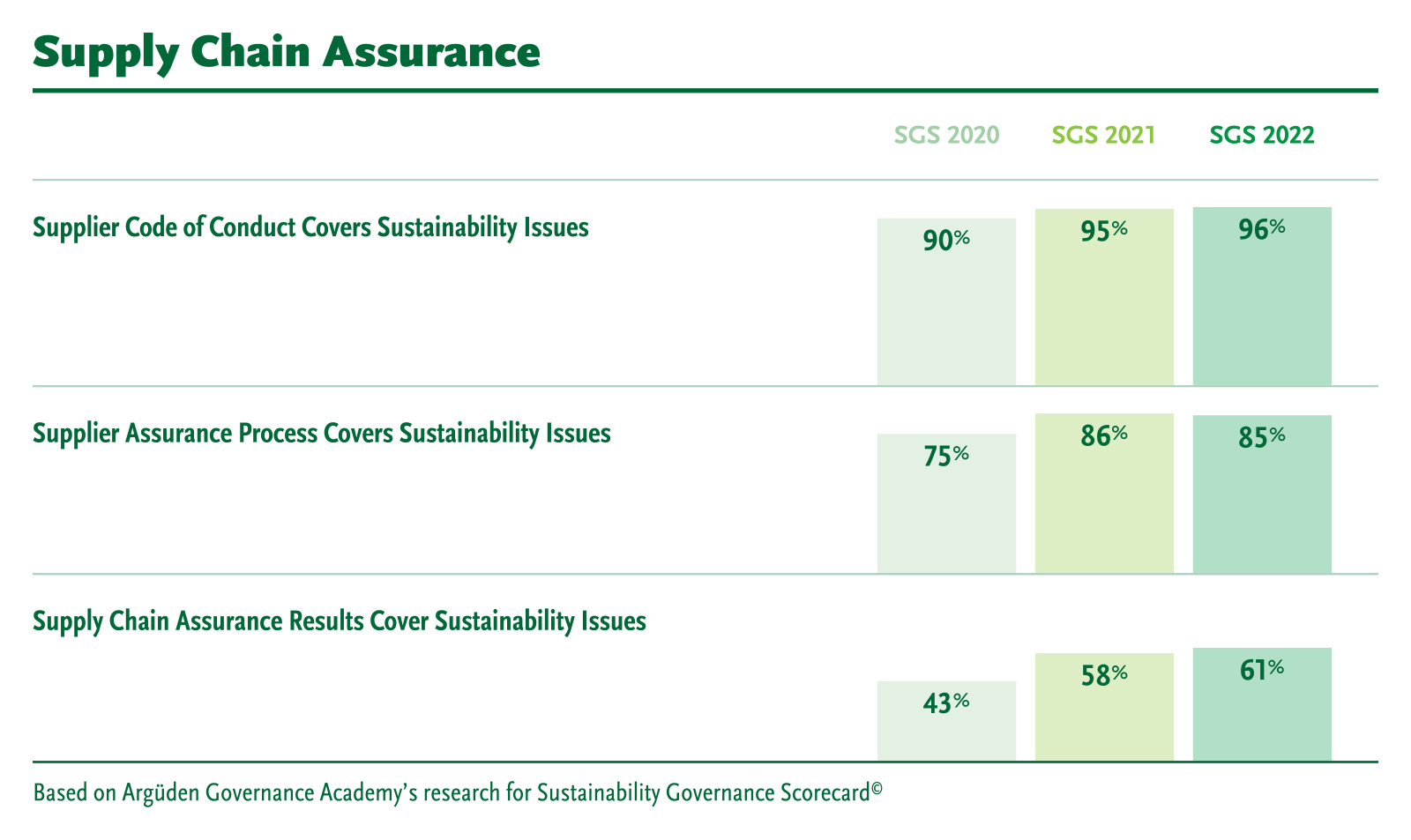
Good Practice Examples
Recommendations
Assume responsibility across the value chain: Supply chains are critical links that connect an organization’s input to its outputs. Many companies’ greatest sustainability risks and opportunities are in the supply chain. As a result, companies must set standards, manage risk and invest in the development of their supply chains for a step-change in sustainability impact.
Develop a sustainability Code of Conduct for the supply chain: Supply chain sustainability requirements and approach should be clearly defined through a Code of Conduct.
Develop a comprehensive assurance process: Assurance process should cover ESG issues relevant for suppliers, and can include a variety of methods such as self-declaration, independent audit and remedial action for high-risk suppliers.
Set KPIs and targets to measure progress against goals and report more details about suppliers to assess and improve performance.
Invest in supply chain developments: A comprehensive sustainability strategy includes developments for the supply chain including training and process improvements.
Develop standards for audit and assessing ESG performance: Sectoral collaboration is required to develop and implement standards for audit. Examples include the Better Cotton Initiative or CO2 measurement across the value chain.
